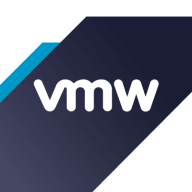

Find out in this report how the two Data Warehouse solutions compare in terms of features, pricing, service and support, easy of deployment, and ROI.
It's costly when you enable support.
The scalability part needs improvement as the sizing requires trial and error.
Most of our functions or jobs are queued due to that.
Amazon Redshift is a stable product, and I would rate it nine or ten out of ten for stability.
I have faced stability issues, mainly due to the storage my organization has, though I am not sure if it's specifically due to the tool.
They should bring the entire ETL data management process into Amazon Redshift.
The cost of technical support is high.
It's a pretty good price and reasonable for the product quality.
The pricing of Amazon Redshift is expensive.
Scalability is also a strong point; I can scale it however I want without any limitations.
Amazon Redshift's performance optimization and scalability are quite helpful, providing functionalities such as scaling up and down.
Security configurations are implemented across all processes, such as AWS Config and GuardDuty.
The product is not complex; I do not have to create stored procedures, functions, or views.


Amazon Redshift is a fully administered, petabyte-scale cloud-based data warehouse service. Users are able to begin with a minimal amount of gigabytes of data and can easily scale up to a petabyte or more as needed. This will enable them to utilize their own data to develop new intuitions on how to improve business processes and client relations.
Initially, users start to develop a data warehouse by initiating what is called an Amazon Redshift cluster or a set of nodes. Once the cluster has been provisioned, users can seamlessly upload data sets, and then begin to perform data analysis queries. Amazon Redshift delivers super-fast query performance, regardless of size, utilizing the exact SQL-based tools and BI applications that most users are already working with today.
The Amazon Redshift service performs all of the work of setting up, operating, and scaling a data warehouse. These tasks include provisioning capacity, monitoring and backing up the cluster, and applying patches and upgrades to the Amazon Redshift engine.
Amazon Redshift Functionalities
Amazon Redshift has many valuable key functionalities. Some of its most useful functionalities include:
Reviews from Real Users
“Redshift's versioning and data security are the two most critical features. When migrating into the cloud, it's vital to secure the data. The encryption and security are there.” - Kundan A., Senior Consultant at Dynamic Elements AS
“With the cloud version whenever you want to deploy, you can scale up, and down, and it has a data warehousing capability. Redshift has many features. They have enriched and elaborate documentation that is helpful.”- Aishwarya K., Solution Architect at Capgemini
VMware Tanzu is a robust platform tailored for data warehousing, complex analytics, BI applications, and predictive analytics. It excels in scalability, performance, and parallel processing, enhancing data handling efficiency. Users report significant productivity improvements and streamlined operations, making it ideal for comprehensive data solutions.
We monitor all Data Warehouse reviews to prevent fraudulent reviews and keep review quality high. We do not post reviews by company employees or direct competitors. We validate each review for authenticity via cross-reference with LinkedIn, and personal follow-up with the reviewer when necessary.